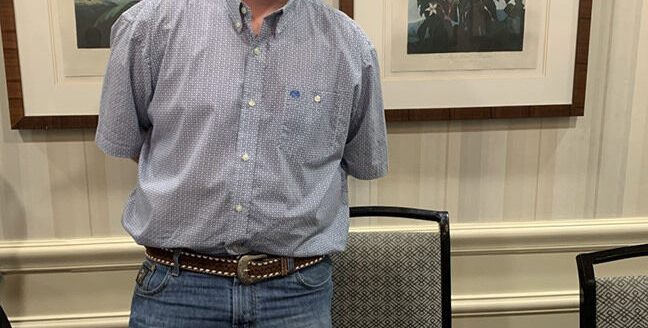Understanding fence law can prevent fence fights from turning neighbors into enemies

A fence marks the boundary of a property and keeps livestock in, but it can also be a source of conflict among landowners. Roger McEowen, Kansas Farm Bureau professor of agricultural law and taxation at Washburn University School of Law in Topeka, Kansas, said building and maintaining a partition fence in particular can add strain to relationships between neighboring landowners.
“Fence disputes can really get nasty in some situations and it can really create some bad neighbors if you’ve got a bad fence and you’re trying to figure out who’s responsible for repairing it,” he said.
McEowen said in many states the statutes do not specify whose responsibility it is to fund repairs, which can sometimes cloud the issue.
“They may say that the adjoining landowners bare an equal portion of the total cost, but don’t specify which portion and that’s on purpose because one part of a fence may go through the woods and across a creek and the other portion may be just flat ground that has no rocks, trees or water on it,” he said. “If you split it down the middle and one party has a responsibility to fix the fence where it goes through all those obstacles, it’s going to cost a lot more than the other person. In many instances, the statutes say just to split the total costs.”
Additionally, McEowen said it is fairly common in agricultural settings for the parties to adopt the so-called right hand rule. Under this approach, neighbors meet at the mid-point of the fence and each party fixes or builds what is to their right. In some cases there is a written fence agreement that is recorded on the land.
“Maybe sometime in the past the adjacent owners entered into that written agreement how they were going to build and maintain the fence,” he explained. “If they recorded it on the land records it becomes binding for the subsequent owners and it will usually make it a lot easier to determine who is responsible for what.”
Ultimately, if the parties cannot agree on how to build or maintain the fence, they need to get the fence viewer involved. The fence viewer is a governing body at either the county or the township level that landowners can utilize to settle a disagreement on who is responsible for repairing or maintaining a fence.
If landowners are installing a new fence, it is a good idea to have the property surveyed before starting construction so the fence is correctly placed on the property line. However, surveying land that has an established fence can get dicey.
“Is the old fence really the boundary?” McEowen questioned. “The answer is maybe. Often we have old, dilapidated fences in agriculture and when you buy a farm you just kind of assume those are boundaries and it may be sold according to those old fences. Sometime later if someone has a survey done and it reveals that old fence is not really the boundary.”
In this case, McEowen said most state laws indicate that when two landowners treat a fence as a legal boundary, graze cattle up to it and farm against it for a number of years, it becomes the legal boundary regardless of the survey. It’s true that fences are designed to divide and separate, but they do not have to close the gate on cordial dealings with neighbors.
Lacey Newlin can be reached at 620-227-1871 or [email protected].



